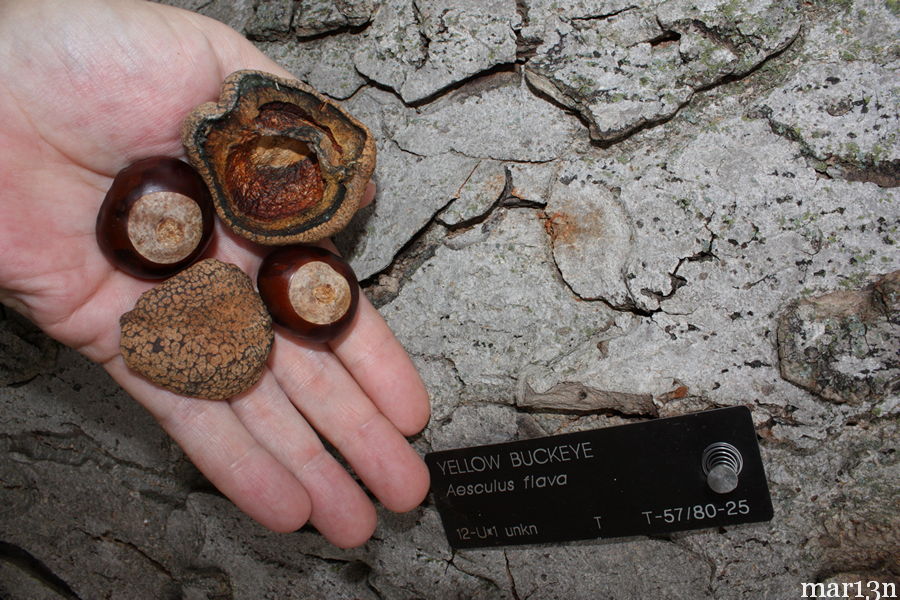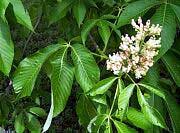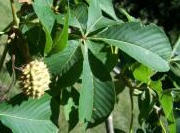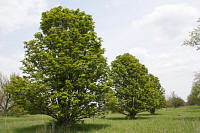 |
Family Hippocastanaceae – Horse-Chestnuts & Buckeyes Tree Encyclopedia | Tree Index | Nut Trees | Fruit Trees | Birch | Oak | Maple Consisting of three genra a 15 species, this small family is sometimes lumped together with Aceraceae (maple) in family Sapindaceae[2]. |
|
Members of the family Hippocastanaceae are trees or shrubs, usually deciduous. Most widespread genus is Aesculus. The American genus Billia and the Chinese genus Handeliodendron are also sometimes included. One distinctive feature is the palmate compound leaves.[1]
Members of this family are closely related to the large, mostly tropical family Sapindaceae, and some systems of plant taxonomy include the members of the Hippocastanaceae along with members of the Aceraceae in an enlarged family Sapindaceae. Recent molecular phylogenetic research (Harrington et al. 2005[2]) has shown that while both Aceraceae and Hippocastanaceae are monophyletic in themselves, their removal from Sapindaceae sensu lato would leave Sapindaceae sensu stricto as a paraphyletic group, particularly with reference to the genus Xanthoceras. Therefore it is now usually synonymized with subfamily Hippocastanoideae [3]. Three genera and 15 species: Asia (Himalayas to Japan), SE Europe, North America, also Central and South America (Billia); two genera (one endemic) and five species (two endemic, two introduced) in China. The Hippocastanaceae, together with the Aceraceae have recently been treated within the Sapindaceae by some authors, e.g., Stevens, Angiosperm Phylogeny Website (2001 onward) [2]. The abundant, large nuts of trees in this family contain much starch but are apparently not suitable for food because they contain a poisonous glucoside, aesculin. Native Americans ate yellow buckeye nuts but first they roasted the nuts among hot stones, peeled, mashed, and leached them with water for several days. This treatment apparently removed the aesculin. Young shoots and seeds of buckeye have been reported poisonous to livestock, and some landowners in Indiana have eradicated buckeye for this reason. Because the seeds of yellow buckeye are poisonous, wild animals do not use them for food and therefore animals probably do not limit the reproduction of this species. The wood is used for pulpwood, woodenware, and sometimes for lumber. |

 Yellow Buckeye Aesculus flava |
 Japanese Horse Chestnut Aesculus turbinata |
 Aesculus glabra Ohio Buckeye |
 Common Horse-Chestnut Aesculus hippocastanum |
|
Damask Red Horse Chestnut Aesculus x carnea 'Plantierensis' |
|
References
|
 |
Tree Encyclopedia |

